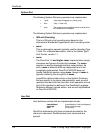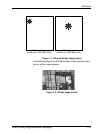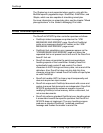
PostScript
1-16 Guide to Using Page Description Languages
You may be able to correct the above situation by means of
the Change Imager Parameters command. Set the
FatScanConversion option to Yes. This should only be used if
needed, because it may degrade performance.
NOTE: When the
copypage
operator and darkening are used
together either via the Thicken attribute or a Change Imager
Parameters command, the data printed on every page generated
by copypage becomes progressively darker.
In addition to these PostScript issues, your output may not meet
your expectations if your printer is not set within the Xerox print
quality specification range. Please make sure your printer has
been adjusted by a qualified technician.
Font consistency
If you do not use exactly the same fonts on both printers, you
cannot expect the output to look the same. The actual shape of
the characters in any given font varies among different font
manufacturers. In fact, different versions of a font from the same
manufacturer may have different shapes and character sets.
Because some PostScript printers have fonts permanently
installed, it is likely that newer models may have newer versions
of the same fonts. The font rasterizer software may vary between
printer models, also resulting in output differences.
Proprietary PostScript extensions
Some PostScript printers contain proprietary PostScript
extensions. In general, PostScript masters that use proprietary
printer features may cause appearance inconsistencies between
different PostScript printers.


















